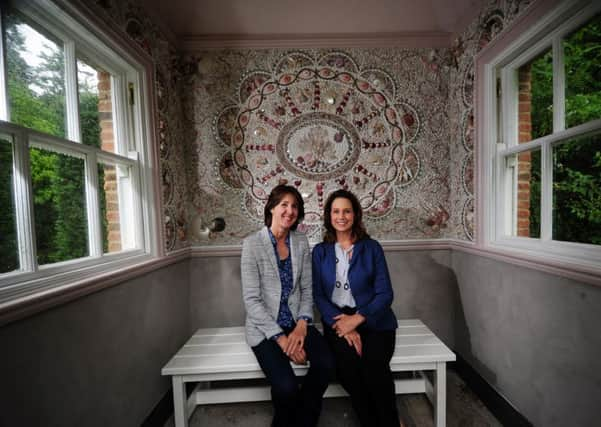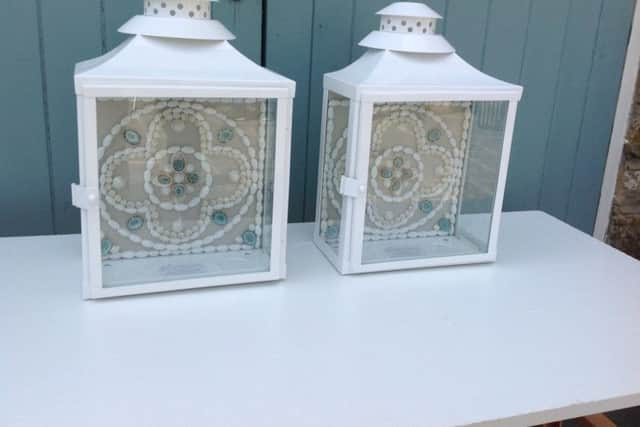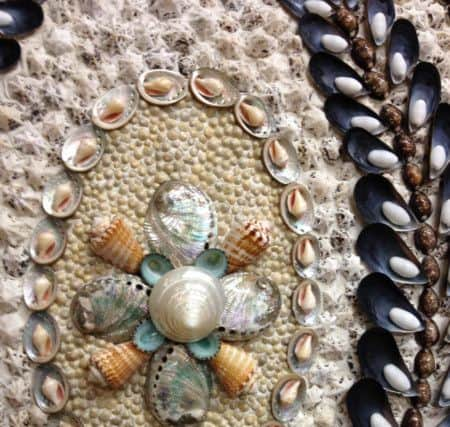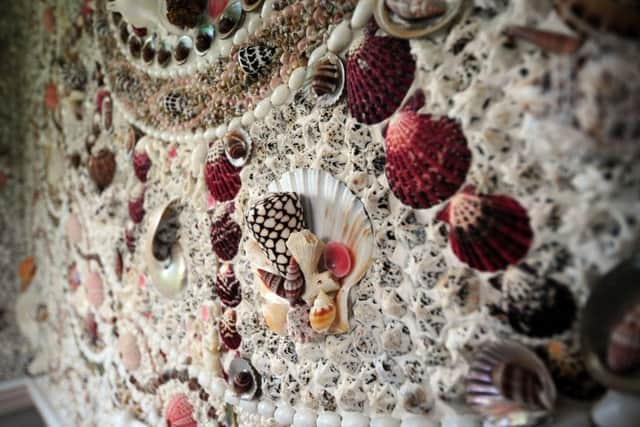Shell work of art


Collecting shells is a joy mostly confined to childhood but for Linda Fenwick and Lucinda Compton it has been a lifelong obsession. Their friendship and shared passion for one of nature’s most remarkable feats has resulted in two extraordinary new buildings, now open to the public. The pair of pavilions in the gardens of Newby Hall are decorated with shells, a task that took 3,000 hours.
There are more than 100 different shells from seas and shores across the globe. Soft pink cowries from Scotland, sea fans from Senegal, pectins and star limpets sit alongside sea urchins, leopard cones and enchanting pearl chamber nautilus to form patterns, an art form pioneered by the Greeks and Romans. The pavilions were commissioned by Lucinda, who lives at the historic hall with her husband Richard and their three children.
Advertisement
Hide AdAdvertisement
Hide Ad“We had two old pavilions that were falling down and I wanted to replace them so that we had a focal point at the bottom of the herbaceous borders. The idea was also to provide somewhere for people to sit and enjoy the views of the garden,” she says.


She asked her brother-in-law, the architect Christopher Smallwood, to design “mini Newbys”. So the pavilions match the Sir Christopher Wren-designed hall and are constructed in the same pink brick, topped with a slate roof and a beacon of gold flame that comes from the Compton family crest.
“The idea for the interiors came from my love of shells. There is something magical about them. I collect them on holidays and when the children were little we used to make shell-covered matchboxes and I even did a shell-covered fireplace,” says Lucinda. “Linda is a friend and her shell work is absolutely incredible, so I asked her if she would help.”
Linda is a renowned shell artist and she and Lucinda, a conservation expert, worked together on the neo-classical designs that reflect Newby Hall’s magnificent early 18th century Robert Adam interiors. Craftsman joiner Colin Thomas then transferred them onto wooden boards.
Advertisement
Hide AdAdvertisement
Hide AdThe boards, which act as a canvas, were covered in shells using tile adhesive before being fixed onto the walls.


“It took me and two helpers 1,000 hours each to do the shelling. It is time-consuming but I love it,” says Linda. “Installing the boards is where it can all go wrong because walls are rarely flat. It is technically challenging but Colin is brilliant and we have learnt through experience what the pitfalls are and we know what to do to combat them.”
The subtle colour palette of soft pink, white, purple and silver was chosen by Lucinda to match the colours in the recently planted borders.
The pavilions also feature some of the cowries she collects from the Isle of Mull, along with Linda’s shells, which are from ethical suppliers, one of her favourites being Eaton’s Seashells.
Advertisement
Hide AdAdvertisement
Hide Ad“A lot of them are by-products of the food industry and any coral is old so using it doesn’t damage the eco-system,” she says.


Texan-born Linda worked in fashion and interiors in her native America until she met her husband James Fenwick, of the Fenwick stores family, and moved to Britain in 1985.
She designed and decorated her own shell house in the garden of her North Yorkshire home. It features her favourite cone and murex shells and took a year to decorate, sparking high-profile commissions and a new career.
She now has a large storeroom and a home studio and alongside designing and making everything from poolside panels to grottos for clients, she makes and sells items of furniture and homeware, including mirrors, lanterns and lamps.
Advertisement
Hide AdAdvertisement
Hide AdHer love of shells grew out of childhood holidays on Sanibel Island in Florida gathering conches and other washed-up sea treasures.


“That turned me into a shell geek and I am still fascinated by them. They are very tactile and no two patterns are the same. I just find it amazing that nature can produce something so decorative,” she says.
The Newby Hall pavilions were especially time- consuming and complex as Lucinda did not want any gaps in the shell work.
“The most common way of decorating is to leave some of the painted board showing but I wanted solid shell. It was more expensive but it has been well worth it,” says Lucinda.
Advertisement
Hide AdAdvertisement
Hide Ad“The reaction from visitors is amazing. They are fascinated by the shells and they are bringing such joy. It’s also lovely to think that they will bring pleasure for years to come.”
The buildings should last a few centuries and their story of friendship and shell collecting will also endure.
Newby Hall and Gardens are open until October 1. www.newbyhall.com; www.lindafenwickshelldesign.com.


Art of thre Ancients
Shells signified fertility and were associated with Aphrodite, Greek goddess of love and beauty, and her Roman counterpart Venus.
Advertisement
Hide AdAdvertisement
Hide AdShell collecting became fashionable in the late 17th century and rare shells from the deep oceans were considered a status symbol.
The Georgians, in typically elegant style, then started a trend for shell-encrusted garden grottos.
Another short renaissance in the late 1960s and 1970s saw an explosion of plant pots, lamp bases, mirrors and Mateus Rose bottles covered in white plaster and shells.
Shell artists have since developed more sophisticated designs and techniques.